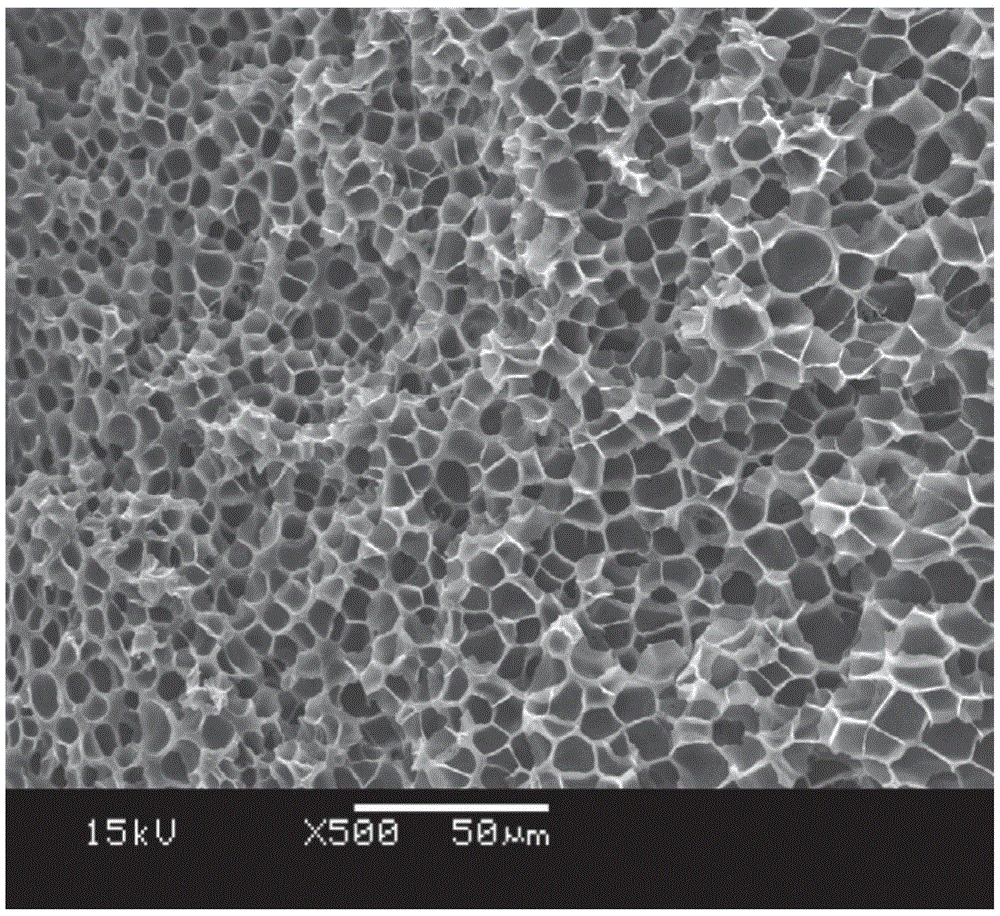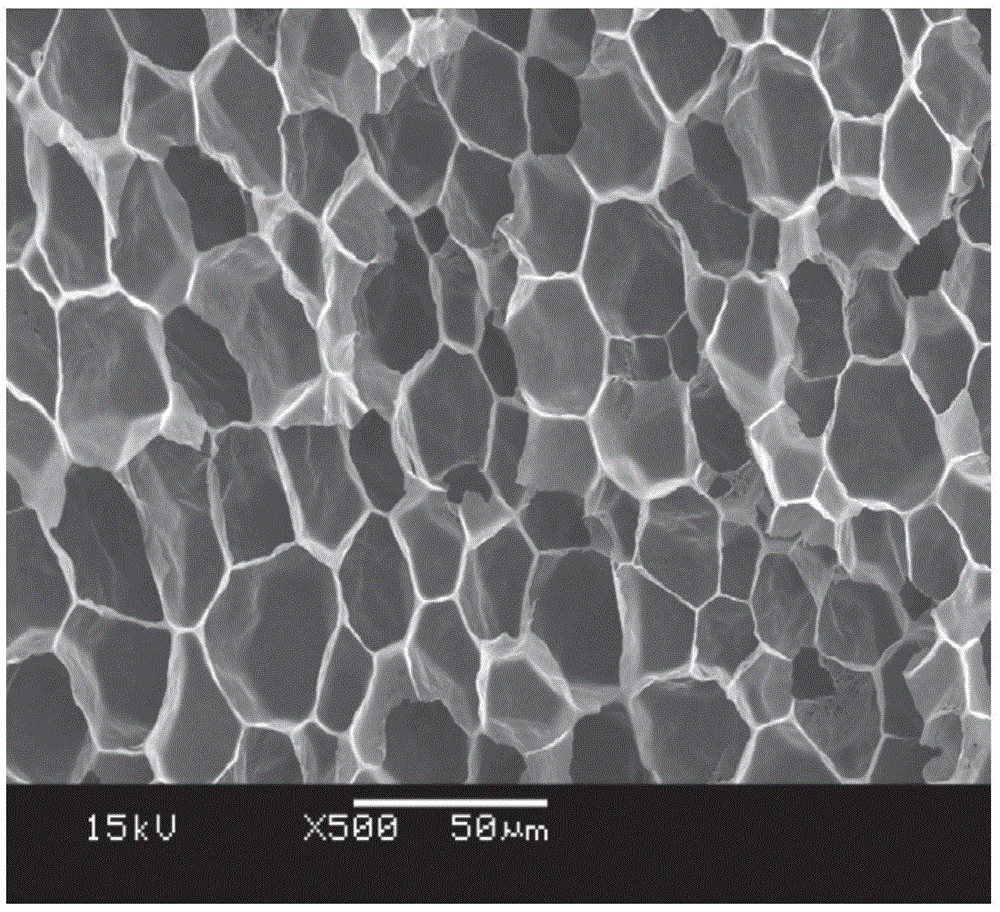Modified polyamide-6 microcellular foam material and preparation method thereof
A microcellular foaming material, polyamide technology, applied in the field of materials, can solve problems such as low melt strength and difficulty in preparing microcellular foamed plastics, and achieve the effect of high pore density, small pore size, and wide application prospects
- Summary
- Abstract
- Description
- Claims
- Application Information
AI Technical Summary
Problems solved by technology
Method used
Image
Examples
Embodiment 1
[0049] Commercial polyamide-6, chain extender 2,2'-bis(2-oxazoline) and antioxidant 1010 were dried in vacuum at 85°C for 12 hours, and fully premixed in the following mass parts:
[0050] Polyamide-6100 parts
[0051] 0.883 parts of chain extender
[0052] Antioxidant 0.5 parts
[0053] The premixed materials are melt blended by Haake torque rheometer to prepare modified polyamide-6 materials. The rotor speed of the Haake torque rheometer is 50 revolutions per minute, and the melting temperature is 240°C. The extrudate is pelletized and dried to obtain a modified polyamide-6 base material for subsequent analysis and foaming.
[0054] Place the dried modified polyamide-6 base material in an autoclave and seal it, where the volume of the modified polyamide-6 base material is not more than one percent of the volume of the autoclave to ensure sufficient foaming Space foam molding. Then use low pressure CO 2 Purge the autoclave 3 times to replace the air in the autoclave, heat the autoc...
Embodiment 2
[0056] Commercial polyamide-6, chain extender 2,2'-bis(2-oxazoline), isophthaloyl dicaprolactam and antioxidant 1010 were dried under vacuum at 85°C for 12 hours, and then dried as follows The mass parts are fully premixed.
[0057]
[0058] The premixed materials are melt blended by Haake torque rheometer to prepare modified polyamide-6 materials. The rotor speed of the Haake torque rheometer is 50 revolutions per minute, and the melting temperature is 240°C. The extrudate is pelletized and dried to obtain an improved base material for subsequent analysis and foaming.
[0059] Place the dried modified polyamide-6 base material in an autoclave and seal it, where the volume of the modified polyamide-6 base material is not more than one percent of the volume of the autoclave to ensure sufficient foaming Space foam molding. Then use low pressure CO 2 Purge the autoclave 3 times to replace the air in the autoclave, heat the autoclave to 235℃, increase the pressure to 25MPa, and swel...
Embodiment 3
[0061] Commercial polyamide-6, chain extender KL-E4370 and antioxidant 1010 were vacuum dried at 85°C for 12 hours and fully premixed in the following mass parts.
[0062] Polyamide-6100 parts
[0063] 5 parts of chain extender
[0064] Antioxidant 0.6 parts
[0065] The premixed materials are melt blended by Haake torque rheometer to prepare modified polyamide-6 materials. The rotor speed of the Haake torque rheometer is 50 revolutions per minute, and the melting temperature is 240°C. The extrudate is pelletized and dried to obtain a modified base material for subsequent analysis and foaming.
[0066] Place the dried modified polyamide-6 base material in an autoclave and seal it, where the volume of the modified polyamide-6 base material is not more than one percent of the volume of the autoclave to ensure sufficient foaming Space foam molding. Then use low pressure CO 2 Purge the autoclave 3 times to replace the air in the autoclave, raise the temperature of the autoclave to 240℃,...
PUM
| Property | Measurement | Unit |
|---|---|---|
| Aperture | aaaaa | aaaaa |
| Aperture | aaaaa | aaaaa |
Abstract
Description
Claims
Application Information
 Login to View More
Login to View More - R&D
- Intellectual Property
- Life Sciences
- Materials
- Tech Scout
- Unparalleled Data Quality
- Higher Quality Content
- 60% Fewer Hallucinations
Browse by: Latest US Patents, China's latest patents, Technical Efficacy Thesaurus, Application Domain, Technology Topic, Popular Technical Reports.
© 2025 PatSnap. All rights reserved.Legal|Privacy policy|Modern Slavery Act Transparency Statement|Sitemap|About US| Contact US: help@patsnap.com



